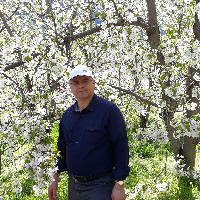Investigating the variations of Macronutrient in same osmotic and matric potential of complete and partial irrigation systems corn root
With increasing global warming, drought stress and salinity are considered as one of the most important problems in agriculture and soil management. These stresses will change the uptake of nutrients by the plant. In the nature, the plant is under salinity and drought in same time. However, few studies have been carried out on the contribution of each stresses to nutrient variation under mixed treatment. Therefore, this study examines the effects of same amounts of matric and osmotic potentials on variation in some nutrients and their ratios under full and partial irrigation systems in corn leaves and roots.
Experiments with two factors consist of potential-type (osmotic, matric, and combined) and potential levels at four levels (-0.46, -1.12, -1.91, -3.63) performed on the basis of completely randomized design in greenhouse conditions. In order to apply salinity and drought stress to two parts of the root of a plant, a separator structure was used to separate the root into two parts in the pot. To fix the suction of the matric and pots drainage, a handmade tensiometer was used.
The study of variations in nutrient concentration in leaves showed that the partial root irrigation system in the mixed treatment reduced by 11 and 7% concentration of N at levels of -1.12 and -19.9 bar, respectively, compared with the matric potential treatment. Also, P concentration of leaf in mixed treatment compared to the osmotic and matric potentials treatment respectively at level -1.91 bar was increased by 87% and 83%, respectively, and at level -3.63 bar 91% and 95%, respectively. However, the concentration of all nutrients studied in the root was influenced by type, potential level and interaction of these two factors except for phosphorus. In partial irrigation system, the significant variations of N, K, K / N and K / Ca in the section were affected by osmotic potential and total Ca and Mg in the section of matric potential compared with to full irrigation root.
This study showed that in high levels of osmotic and matrix potential in mixed treatments, due to the presence of sufficient water in half of the root, the changes in the nutritional elements are low compared to the isolated osmotic and matric treatments and increase with the potential reduction of these changes. In this case, the most variations in the elements are related to the salinity part the mixed treatment. Therefore, the reduction of the osmotic potential level in the root portion should be accompanied by increased matric potential in the other part of the root, so that it can reduce the nutritional balance of the plant.
-
Using double and triple biplots for identification of superior winter wheat genotypes in term of root traits, yield and yield components under rainfed conditions
Ramin Sadegh Ghol Moghadam *, Jalal Saba, , Mozaffar Roostaei
A Quarterly Journal Cereal Research, -
Combining ability and heterosis of spring oilseed rape genotypes under normal irrigation and drought stress conditions
Parvaneh Gholizadeh Sarcheshmeh, Hasan Amiri Oghan*, , Amir Gholizadeh
Journal of Crop Breeding,


